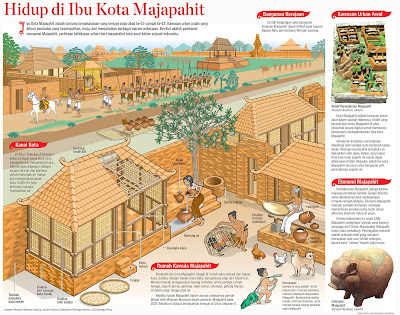Panca Maya Kosa
Five layers of our being
Kośa (pronounced "kosha") means sheath, like the lampshades covering the light. Maya means appearance, as if something appears to be one way, but is really another. Pañca means five. The Upaniṣads explain that our true Self, our pure consciousness (or whatever term can be useful to describe our unchanging essence) is covered up by many layers.
It is inaccessible due to the "thick fog" of misunderstandings or distortions present in each layer. The "work" therefore is to bring more clarity, more light, more awareness to each layer.
More simply though, this model of five layers is very useful to consider all different aspects that make us who we are in daily life.
1. Physical - Annamaya kośa
The most outer layer, the most dense, is the layer of our body, our skin and bones. Anna means food, which is necessary to sustain this layer. When we work with āsana practice, we are primarily working with this layer.
2. Energy, breath - Prāṇamaya kośa
Prāna means energy. It is the vital force that produces the subtle vibrations related to breath, and which are the driving force behind the physical aspect of the senses and the operation of the physical body. When carefully regulating the breath during āsana practice, and while sitting during pranayāma practice, we are working with this layer.
3. Mental - Manamaya kośa
Manas means mind. It is the level of processing thoughts and coordinating senses and actions. Often, it is explained that this layer also deals with emotions (which are linked to thoughts), but I would argue that emotions are really part of the Energy layer, at the cross-point between thoughts and the body. Traditionally, the chanting of mantras is used to bring stability to this layer.
4. Intelligence, personality - Vijñānamaya kośa
Vijñāna means knowledge. It is the sheath of wisdom that is underneath the processing, thinking aspect of the mind. It is related to our personality, it knows, decides, judges, and discriminates between this and that, between useful and not useful. Meditation is the practice to work with this layer, to increase understanding.
5. Bliss - Ānandamaya kośa
Ānanda means bliss. However, it is not bliss as a mere emotion experienced at the level of the sheath of mind. It is peace, joy and unconditional love that is underneath, beyond the mind, independent of any reason or stimulus to cause a happy mental reaction. It is simply being.
All layers interact. If there is sickness or injury in the body for instance, our mood and energy levels might be affected, which in turn might negatively affect our thinking and decision making. Equally, new understandings or uplifting experiences can positively impact our energy levels, increase our vitality and therefore keep our body healthier. The modern term "holistic" is useful; as a system, Yoga looks at the individual as a whole, rather than focusing on symptoms.
Kośa (pronounced "kosha") means sheath, like the lampshades covering the light. Maya means appearance, as if something appears to be one way, but is really another. Pañca means five. The Upaniṣads explain that our true Self, our pure consciousness (or whatever term can be useful to describe our unchanging essence) is covered up by many layers.
It is inaccessible due to the "thick fog" of misunderstandings or distortions present in each layer. The "work" therefore is to bring more clarity, more light, more awareness to each layer.
More simply though, this model of five layers is very useful to consider all different aspects that make us who we are in daily life.
1. Physical - Annamaya kośa
The most outer layer, the most dense, is the layer of our body, our skin and bones. Anna means food, which is necessary to sustain this layer. When we work with āsana practice, we are primarily working with this layer.
2. Energy, breath - Prāṇamaya kośa
Prāna means energy. It is the vital force that produces the subtle vibrations related to breath, and which are the driving force behind the physical aspect of the senses and the operation of the physical body. When carefully regulating the breath during āsana practice, and while sitting during pranayāma practice, we are working with this layer.
3. Mental - Manamaya kośa
Manas means mind. It is the level of processing thoughts and coordinating senses and actions. Often, it is explained that this layer also deals with emotions (which are linked to thoughts), but I would argue that emotions are really part of the Energy layer, at the cross-point between thoughts and the body. Traditionally, the chanting of mantras is used to bring stability to this layer.
4. Intelligence, personality - Vijñānamaya kośa
Vijñāna means knowledge. It is the sheath of wisdom that is underneath the processing, thinking aspect of the mind. It is related to our personality, it knows, decides, judges, and discriminates between this and that, between useful and not useful. Meditation is the practice to work with this layer, to increase understanding.
5. Bliss - Ānandamaya kośa
Ānanda means bliss. However, it is not bliss as a mere emotion experienced at the level of the sheath of mind. It is peace, joy and unconditional love that is underneath, beyond the mind, independent of any reason or stimulus to cause a happy mental reaction. It is simply being.
All layers interact. If there is sickness or injury in the body for instance, our mood and energy levels might be affected, which in turn might negatively affect our thinking and decision making. Equally, new understandings or uplifting experiences can positively impact our energy levels, increase our vitality and therefore keep our body healthier. The modern term "holistic" is useful; as a system, Yoga looks at the individual as a whole, rather than focusing on symptoms.



Komentar
Posting Komentar